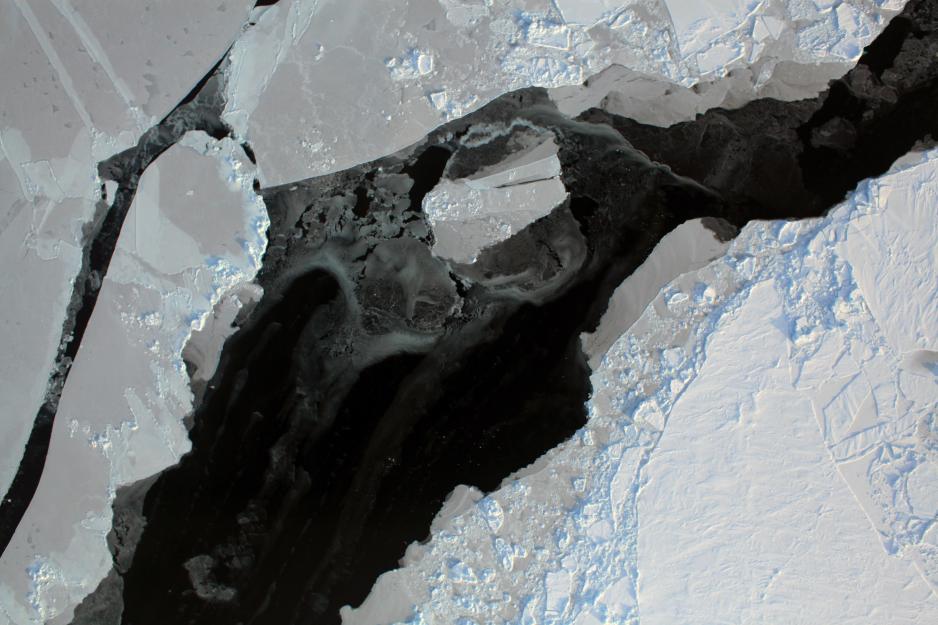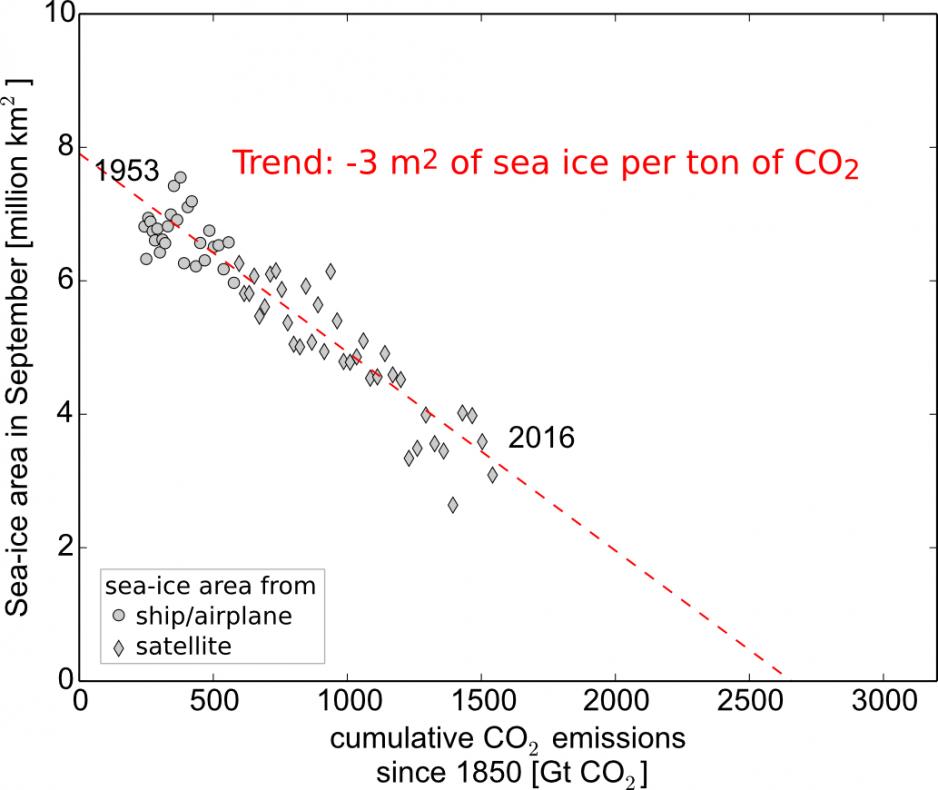What is your contribution to Arctic sea ice loss?

With the Arctic sea ice extent setting record lows in a worrisome pace, a recent study has now – for the very first time – clearly illustrated the correlation between summer sea ice loss and anthropogenic CO2 emission.
The year 2016 has so far not only seen the 2nd lowest Arctic sea ice extent (4.14 million m2 on September 10) on record but with an averaged 6.4 million m2 also the lowest October extent in the satellite record. And despite denying or conspiratorial voices, the humans’ carbon footprint has a direct impact on the decline of Arctic sea ice that follows in quick succession.
Connecting the dots
Two researchers have now distinctly visualised the troublesome relationship between the amount of carbon dioxide our society and we as individuals emit and the melting of Arctic sea ice. And the indicated numbers, recently published in Science magazine, give indeed reason for concern. Dirk Notz, from the Max-Planck-Institute of Meteorology in Hamburg (Germany) and Julienne Stroeve, from the National Snow and Ice Data Center in Boulder (Colorado) concluded that for each emitted metric ton of carbon dioxide, 3 m2 of September Arctic sea ice disappeared during the observational period 1953 to 2015.

“Our study is the first that evidently illustrates the human impact on the increasing loss of summer Arctic sea ice”, says Dirk Notz in a telephone interview. “Until now, scientific conclusions on that matter were rather abstract and almost intangible for a non-scientific audience. However, from now on, we can actually calculate our individual impact on Arctic sea ice loss every single year – an influence that led to a loss of about ¾ of Arctic summer sea ice volume over the last 40 years.”
For example, in 2014 the CO2 emission per capita accounted for 8,7 tons in Norway, 9,3 tons in Germany, 12.4 tons in Russia and 16,5 tons in the United States. Accordingly, each Norwegian contributed to roughly 26 m2 of Arctic sea ice loss, a German to 28 m2, a Russian to 37 m2 and a US-American to 50 m2. According to FIFA's Laws of the Game, a football goal measures 2,44 m high and 7,32 m wide, which is approximately 18 m2. Hence, individuals from the referred to countries were responsible for an Arctic summer sea ice loss of about 1,5 - 2 football goals in 2014.
What about volume?
The second alarming component of the Arctic’s sea ice loss – the decline of sea ice volume – was explicitly not part of the conducted study. “Unfortunately, we do not have the same amount of long-time data for sea ice volume as we do have for the extent. Reliable data only exists for a couple of years now and not for the same observational period as for the sea ice extent”, indicates Notz. However, the researcher explains why the dots of extent and volume can still be connected. “Broadly speaking, the North polar ice cap resembles a gently rising hill. Thinnest on its edges. And thickest at its centre – near the North Pole. The emitted carbon dioxide leads to a uniform melting of the ice cap, regardless its initial thickness. Yet, the thinner the ice is, the faster it disappears. And our research examined the thin, disappearing ice on the ice cap’s edges.”
Count your reduction
Notz hopes that the study functions as a booster for both individuals and the industry to reconsider their CO2 performance. “The essence of our study can be seen in the unambiguity of our conclusion. The less CO2 we emit, the less ice is melting. And the reduction is countable. Accordingly, we now have a clear conception of how a change in ‘carbon dioxide behaviour’ leads to positive and countable impact in our combat against climate change. The study should be an eye-opener, with for example the industry being able to put a figure on how much they contribute to the fight against climate change if reducing their CO2 emission.”
